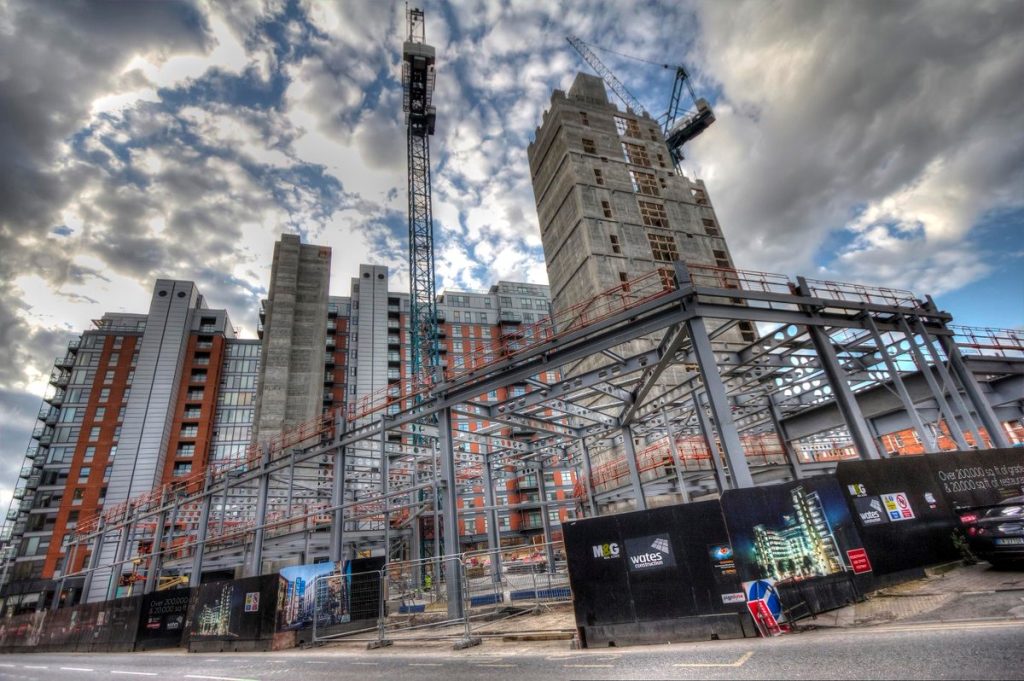How temporary works are designed and delivered:
Temporary works are short-term solutions that deliver long-lasting benefits to a construction.
As the measures which make a project possible – providing the ‘backbone’ for support, protection and access for works to take place – proper planning and delivery is essential.
Primarily, temporary works make a project safe and feasible. And as more construction projects require ambitious retrofits or operations in challenging locations, more complex temporary measures are required.
Their importance means they have a significant impact on programme sequencing, timings and, therefore, budgets.
Prioritising collaboration and communication around temporary works at pre-construction stage can create project efficiencies Contractors can advise on designing out permanent works features which will require unfeasible, costly or risky methods to deliver.
What are temporary works?
Temporary works are the solutions that support delivery of a construction, enabling access by plant and workers and working to ensure the stability and strength of a structure during build. They provide:
- Support or protection for existing structures
- Support or protection for excavations
- Support for plant or equipment
- Access to a development.
- At their simplest, these measures can consist of scaffolding for access and props for support. However, they are often much more complex, particularly for a steel frame construction, and require expert guidance and engineering.
Support or protection for steel frames under construction includes transfer beams to manage deflection and fatigue, and façade retentions to protect existing structures. Support is also required for the plant or equipment necessary for steel frames, such as metal decking or crane supports.
Since the solutions are temporary, planning for them must also include safely removing them during or on completion of the project. However, some temporary works do remain in place once works are complete.
How are temporary works decided on and designed?
Expert contractors and suppliers will advise on the design and delivery of temporary works, covering three key areas:
- Identifying which types are required and appropriate. This involves looking at where they are required and how they will be erected, how and for how long they are used, and how they are dismantled and removed.
- Determining whether they can be designed out of a build. This involves finding where alternative solutions for the permanent works can reduce the requirements for some types of temporary works, particularly if the required solutions pose unnecessary risks or high costs. For example, for a steel frame, are alternatives methods for lifting possible, or can a member be strengthened to accommodate temporary loading.
- Advising on what information is required from, or should be passed to, the main contractor at pre-construction. Industry guidance suggests a construction sequence should be illustrated, as a minimum.
Who is responsible for the temporary works during build?
Where temporary measures are required for steel frames, these are the responsibility of the steelwork contractor. This ensures they will work alongside the steelworker’s erection methods, allowing for temporary bracing, restraint requirements or propping.
They should also be understood and prioritised by permanent works designers and main contractors too.
Often temporary works do not receive the same attention as permanent works. This is largely because they aren’t visible in the final ‘product’. However, since they impact the final build and project costs and are subject to statutory regulations, they should be understood and overseen by more than just the contractors delivering them.
To achieve this, attention should be paid at pre-construction stage, with resources committed to sourcing all relevant information ready for their design.
In understanding the importance of temporary works and allocating reasonable time to their design, efficiencies can be created in the project delivery by designing out permanent features that would require costly or risky approaches.
What are the regulatory requirements?
Temporary works are recognised as engineered solutions, meaning they are subject to the same processes and procedures to identify and manage risk during use.
They are subject to the same duties as permanent works so must be properly managed to ensure safety and quality. They are guided by the standards of BS 5975 Temporary Works Procedures. This gives practical guidelines on design, specification, construction, and the use and dismantling of formwork.
How to ensure efficient temporary works
For complex projects, prioritising early contractor involvement at pre-construction stage is essential. Cooperation, coordination and communication are key, for contractors, designers and clients to work collaboratively.
Even for simple schemes efficient design, installation and management of temporary works will make a marked difference to project delivery.
For more expert advice, subscribe to our newsletter or visit our Insights webpage.

